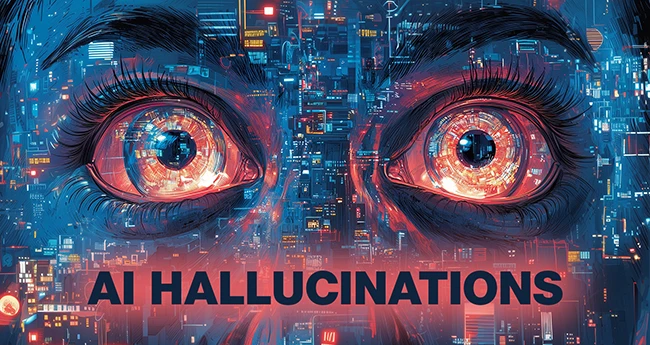Quote for the day:
"Great leaders do not desire to lead but to serve." -- Myles Munroe
AI Skills Are in High Demand, But AI Education Is Not Keeping Up
 There’s already a big gap between how many AI workers are needed and how many
are available, and it’s only getting worse. The report says the U.S. was short
more than 340,000 AI and machine learning workers in 2023. That number could
grow to nearly 700,000 by 2027 if nothing changes. Faced with limited options in
traditional higher education, most learners are taking matters into their own
hands. According to the report, “of these 8.66 million people learning AI, 32.8%
are doing so via a structured and supervised learning program, the rest are
doing so in an independent manner.” Even within structured programs, very few
involve colleges or universities. As the report notes, “only 0.2% are learning
AI via a credit-bearing program from a higher education institution,” while “the
other 99.8% are learning these skills from alternative education providers.”
That includes everything from online platforms to employer-led training —
programs built for speed, flexibility, and real-world use, rather than degrees.
College programs in AI are growing, but they’re still not reaching enough
people. Between 2018 and 2023, enrollment in AI and machine learning programs at
U.S. colleges went up nearly 45% each year. Even with that growth, these
programs serve only a small slice of learners — most people are still turning to
other options.
There’s already a big gap between how many AI workers are needed and how many
are available, and it’s only getting worse. The report says the U.S. was short
more than 340,000 AI and machine learning workers in 2023. That number could
grow to nearly 700,000 by 2027 if nothing changes. Faced with limited options in
traditional higher education, most learners are taking matters into their own
hands. According to the report, “of these 8.66 million people learning AI, 32.8%
are doing so via a structured and supervised learning program, the rest are
doing so in an independent manner.” Even within structured programs, very few
involve colleges or universities. As the report notes, “only 0.2% are learning
AI via a credit-bearing program from a higher education institution,” while “the
other 99.8% are learning these skills from alternative education providers.”
That includes everything from online platforms to employer-led training —
programs built for speed, flexibility, and real-world use, rather than degrees.
College programs in AI are growing, but they’re still not reaching enough
people. Between 2018 and 2023, enrollment in AI and machine learning programs at
U.S. colleges went up nearly 45% each year. Even with that growth, these
programs serve only a small slice of learners — most people are still turning to
other options.Why chaos engineering is becoming essential for enterprise resilience
 Enterprises should treat chaos engineering as a routine practice, just like
sports teams before every game. These groups would never participate in matches
without understanding their opponent or ensuring they are in the best possible
position to win. They train under pressure, run through potential scenarios, and
test their plays to identify the weaknesses of their opponents. This same
mindset applies to enterprise engineering teams preparing for potential chaos in
their environments. By purposely simulating disruptions like server outages,
latency, or dropped connections, or by identifying bugs and poor code,
enterprises can position themselves to perform at their best when these
scenarios occur in real life. They can adopt proactive approaches to detecting
vulnerabilities, instituting recovery strategies, building trust in systems and,
in the end, improving their overall resilience. ... Additionally, chaos
engineering can help improve scalability within the organisation. Enterprises
are constantly seeking ways to grow and enhance their apps or platforms so that
more and more end-users can see the benefits. By doing this, they can remain
competitive and generate more revenue. Yet, if there are any cracks within the
facets or systems that power their apps or platforms, it can be extremely
difficult to scale and deliver value to both customers and the
organisation.
Enterprises should treat chaos engineering as a routine practice, just like
sports teams before every game. These groups would never participate in matches
without understanding their opponent or ensuring they are in the best possible
position to win. They train under pressure, run through potential scenarios, and
test their plays to identify the weaknesses of their opponents. This same
mindset applies to enterprise engineering teams preparing for potential chaos in
their environments. By purposely simulating disruptions like server outages,
latency, or dropped connections, or by identifying bugs and poor code,
enterprises can position themselves to perform at their best when these
scenarios occur in real life. They can adopt proactive approaches to detecting
vulnerabilities, instituting recovery strategies, building trust in systems and,
in the end, improving their overall resilience. ... Additionally, chaos
engineering can help improve scalability within the organisation. Enterprises
are constantly seeking ways to grow and enhance their apps or platforms so that
more and more end-users can see the benefits. By doing this, they can remain
competitive and generate more revenue. Yet, if there are any cracks within the
facets or systems that power their apps or platforms, it can be extremely
difficult to scale and deliver value to both customers and the
organisation.Fractional CXOs: A New Model for a C-Everything World
 Fractional leadership isn’t a new idea—it’s long been part of the advisory
board and consulting space. But what’s changed is its mainstream adoption.
Companies are now slotting in fractional leaders not just for interim coverage
or crisis management, but as a deliberate strategy for agility and
cost-efficiency. It’s not just companies benefiting either. Many
high-performing professionals are choosing the fractional path because it
gives them freedom, variety, and a more fulfilling way to leverage their
skills without being tied down to one company or role. For them, it’s not just
about fractional time—it’s about full-spectrum opportunity. ... Whether you’re
a company executive exploring options or a leader considering a lifestyle
pivot, here are the biggest advantages of fractional CxOs:Strategic Agility:
Need someone to lead a transformation for 6–12 months? Need guidance scaling
your data team? A fractional CxO lets you dial in the right leadership at the
right time. Cost Containment: You pay for what you need, when you need it. No
long-term employment contracts, no full comp packages, no redundancy risk.
Experience Density: Most fractional CxOs have deep domain expertise and have
led across multiple industries. That cross-pollination of experience can bring
unique insights and fast-track solutions.
Fractional leadership isn’t a new idea—it’s long been part of the advisory
board and consulting space. But what’s changed is its mainstream adoption.
Companies are now slotting in fractional leaders not just for interim coverage
or crisis management, but as a deliberate strategy for agility and
cost-efficiency. It’s not just companies benefiting either. Many
high-performing professionals are choosing the fractional path because it
gives them freedom, variety, and a more fulfilling way to leverage their
skills without being tied down to one company or role. For them, it’s not just
about fractional time—it’s about full-spectrum opportunity. ... Whether you’re
a company executive exploring options or a leader considering a lifestyle
pivot, here are the biggest advantages of fractional CxOs:Strategic Agility:
Need someone to lead a transformation for 6–12 months? Need guidance scaling
your data team? A fractional CxO lets you dial in the right leadership at the
right time. Cost Containment: You pay for what you need, when you need it. No
long-term employment contracts, no full comp packages, no redundancy risk.
Experience Density: Most fractional CxOs have deep domain expertise and have
led across multiple industries. That cross-pollination of experience can bring
unique insights and fast-track solutions.Cyberattacks reshape modern conflict & highlight resilience needs
 Governments worldwide are responding to the changing threat landscape. The
United States, European Union, and NATO have increased spending on cyber
defence and digital threat-response measures. The UK's National Cyber Force
has broadened its recruitment initiatives, while the European Union has
introduced new cyber resilience strategies. Even countries with neutral
status, such as Switzerland, have begun investing more heavily in cyber
intelligence. ... Critical infrastructure encompasses power grids, water
systems, and transport networks. These environments often use operational
technology (OT) networks that are separated from the internet but still have
vulnerabilities. Attackers typically exploit mechanisms such as phishing,
infected external drives, or unsecured remote access points to gain entry. In
2024, a group linked to Iran, called CyberAv3ngers, breached several US water
utilities by targeting internet-connected control systems, raising risks of
water contamination. ... Organisations are advised against bespoke security
models, with tried and tested frameworks such as NIST CSF, OWASP SAMM, and ISO
standards cited as effective guides for structuring improvement. The statement
continues, "Like any quality control system it is all about analysis of the
situation and iterative improvements. Things evolve slowly until they happen
all at once."
Governments worldwide are responding to the changing threat landscape. The
United States, European Union, and NATO have increased spending on cyber
defence and digital threat-response measures. The UK's National Cyber Force
has broadened its recruitment initiatives, while the European Union has
introduced new cyber resilience strategies. Even countries with neutral
status, such as Switzerland, have begun investing more heavily in cyber
intelligence. ... Critical infrastructure encompasses power grids, water
systems, and transport networks. These environments often use operational
technology (OT) networks that are separated from the internet but still have
vulnerabilities. Attackers typically exploit mechanisms such as phishing,
infected external drives, or unsecured remote access points to gain entry. In
2024, a group linked to Iran, called CyberAv3ngers, breached several US water
utilities by targeting internet-connected control systems, raising risks of
water contamination. ... Organisations are advised against bespoke security
models, with tried and tested frameworks such as NIST CSF, OWASP SAMM, and ISO
standards cited as effective guides for structuring improvement. The statement
continues, "Like any quality control system it is all about analysis of the
situation and iterative improvements. Things evolve slowly until they happen
all at once."The trials of HR manufacturing: AI in blue-collar rebellion
 The challenge of automation isn't just technological, it’s deeply human. How
do you convince someone who has operated a ride in your park for almost two
decades, who knows every sound, every turn, every lever by heart, that the new
sleek control panel is an upgrade and not a replacement? That the machine
learning model isn’t taking their job; it’s opening doors to something better?
For many workers, the introduction of automation doesn’t feel like innovation
but like erasure. A line shuts down. A machine takes over. A skill that took
them years to master becomes irrelevant overnight. In this reality, HR’s role
extends far beyond workflow design; it now must navigate fear, build trust,
and lead people through change with empathy and clarity. Upskilling entails
more than just access to platforms that educate you. It’s about building
trust, ensuring relevance, and respecting time. Workers aren’t just asking how
to learn, but why. Workers want clarity on their future career paths. They’re
asking, “Where is this ride taking me?” As Joseph Fernandes, SVP of HR for
South Asia at Mastercard, states, change management should “emphasize how AI
can augment employee capabilities rather than replace them.” Additionally, HR
must address the why of training, not just the how. Workers don’t want
training videos; rather, they want to know what the next five years of their
job look like.
The challenge of automation isn't just technological, it’s deeply human. How
do you convince someone who has operated a ride in your park for almost two
decades, who knows every sound, every turn, every lever by heart, that the new
sleek control panel is an upgrade and not a replacement? That the machine
learning model isn’t taking their job; it’s opening doors to something better?
For many workers, the introduction of automation doesn’t feel like innovation
but like erasure. A line shuts down. A machine takes over. A skill that took
them years to master becomes irrelevant overnight. In this reality, HR’s role
extends far beyond workflow design; it now must navigate fear, build trust,
and lead people through change with empathy and clarity. Upskilling entails
more than just access to platforms that educate you. It’s about building
trust, ensuring relevance, and respecting time. Workers aren’t just asking how
to learn, but why. Workers want clarity on their future career paths. They’re
asking, “Where is this ride taking me?” As Joseph Fernandes, SVP of HR for
South Asia at Mastercard, states, change management should “emphasize how AI
can augment employee capabilities rather than replace them.” Additionally, HR
must address the why of training, not just the how. Workers don’t want
training videos; rather, they want to know what the next five years of their
job look like.
What Do DevOps Engineers Think of the Current State of DevOps
 The toolchain is consolidating. CI/CD, monitoring, compliance, security and
cloud provisioning tools are increasingly bundled or bridged in platform layers.
DevOps.com’s coverage tracks this trend: It’s no longer about separate
pipelines, it’s about unified DevOps platforms. CloudBees Unify is a prime
example: Launched in mid‑2025, it unifies governance across toolchains without
forcing migration — an AI‑powered operating layer over existing tools. ...
DevOps education and certification remain fragmented. Traditional certs —
Kubernetes (CKA, CKAD), AWS/Azure/GCP and DevOps Foundation — remain staples.
But DevOps engineers express frustration: Formal learning often lags behind
real‑world tooling, AI integration, or platform engineering practices. Many
engineers now augment certs with hands‑on labs, bootcamps and informal community
learning. Organizations are piloting internal platform engineer training
programs to bridge skills gaps. Still, a mismatch persists between the modern
tech stack and classroom syllabi. ... DevOps engineers today stand at a
crossroads: Platform engineering and cloud tooling have matured into the
ecosystem, AI is no longer experimentation but embedded flow. Job markets are
shifting, but real demand remains strong — for creative, strategic and adaptable
engineers who can shepherd tools, teams and AI together into scalable delivery
platforms.
The toolchain is consolidating. CI/CD, monitoring, compliance, security and
cloud provisioning tools are increasingly bundled or bridged in platform layers.
DevOps.com’s coverage tracks this trend: It’s no longer about separate
pipelines, it’s about unified DevOps platforms. CloudBees Unify is a prime
example: Launched in mid‑2025, it unifies governance across toolchains without
forcing migration — an AI‑powered operating layer over existing tools. ...
DevOps education and certification remain fragmented. Traditional certs —
Kubernetes (CKA, CKAD), AWS/Azure/GCP and DevOps Foundation — remain staples.
But DevOps engineers express frustration: Formal learning often lags behind
real‑world tooling, AI integration, or platform engineering practices. Many
engineers now augment certs with hands‑on labs, bootcamps and informal community
learning. Organizations are piloting internal platform engineer training
programs to bridge skills gaps. Still, a mismatch persists between the modern
tech stack and classroom syllabi. ... DevOps engineers today stand at a
crossroads: Platform engineering and cloud tooling have matured into the
ecosystem, AI is no longer experimentation but embedded flow. Job markets are
shifting, but real demand remains strong — for creative, strategic and adaptable
engineers who can shepherd tools, teams and AI together into scalable delivery
platforms.
7 enterprise cloud strategy trends shaking up IT today
 Vertical cloud platforms aren’t just generic cloud services — they’re tailored
ecosystems that combine infrastructure, AI models, and data architectures
specifically optimized for sectors such as healthcare, manufacturing, finance,
and retail, says Chandrakanth Puligundla, a software engineer and data analyst
at grocery store chain Albertsons. What makes this trend stand out is how
quickly it bridges the gap between technical capabilities and real business
outcomes, Puligundla says. ... Organizations must consider what workloads go
where and how that distribution will affect enterprise performance, reduce
unnecessary costs, and help keep workloads secure, says Tanuj Raja, senior vice
president, hyperscaler and marketplace, North America, at IT distributor and
solution aggregator TD SYNNEX. In many cases, needs are driving a move toward a
hybrid cloud environment for more control, scalability, and flexibility, Raja
says. ... We’re seeing enterprises moving past the assumption that everything
belongs in the cloud, says Cache Merrill, founder of custom software development
firm Zibtek. “Instead, they’re making deliberate decisions about workload
placement based on actual business outcomes.” This transition represents
maturity in the way enterprises think about making technology decisions, Merrill
says. He notes that the initial cloud adoption phase was driven by a fear of
being left behind.
Vertical cloud platforms aren’t just generic cloud services — they’re tailored
ecosystems that combine infrastructure, AI models, and data architectures
specifically optimized for sectors such as healthcare, manufacturing, finance,
and retail, says Chandrakanth Puligundla, a software engineer and data analyst
at grocery store chain Albertsons. What makes this trend stand out is how
quickly it bridges the gap between technical capabilities and real business
outcomes, Puligundla says. ... Organizations must consider what workloads go
where and how that distribution will affect enterprise performance, reduce
unnecessary costs, and help keep workloads secure, says Tanuj Raja, senior vice
president, hyperscaler and marketplace, North America, at IT distributor and
solution aggregator TD SYNNEX. In many cases, needs are driving a move toward a
hybrid cloud environment for more control, scalability, and flexibility, Raja
says. ... We’re seeing enterprises moving past the assumption that everything
belongs in the cloud, says Cache Merrill, founder of custom software development
firm Zibtek. “Instead, they’re making deliberate decisions about workload
placement based on actual business outcomes.” This transition represents
maturity in the way enterprises think about making technology decisions, Merrill
says. He notes that the initial cloud adoption phase was driven by a fear of
being left behind.
Beyond the Rack: 6 Tips for Reducing Data Center Rental Costs
 One of the simplest ways to reduce spending on data center rentals is to choose
data centers located in regions where data center space costs the least. Data
center rental costs, which are often measured in terms of dollars-per-kilowatt,
can vary by a factor of ten or more between different parts of the world.
Perhaps surprisingly, regions with the largest concentrations of data centers
tend to offer the most cost-effective rates, largely due to economies of scale.
... Another key strategy for cutting data center rental costs is to consolidate
servers. Server consolidation reduces the total number of servers you need to
deploy, which in turn minimizes the space you need to rent. The challenge, of
course, is that consolidating servers can be a complex process, and businesses
don’t always have the means to optimize their infrastructure footprint
overnight. But if you deploy more servers than necessary, they effectively
become a form of technical debt that costs more and more the longer you keep
them in service. ... As with many business purchases, the list price for data
center rent is often not the lowest price that colocation operators will accept.
To save money, consider negotiating. The more IT equipment you have to deploy,
the more successful you’ll likely be in locking in a rental discount.
One of the simplest ways to reduce spending on data center rentals is to choose
data centers located in regions where data center space costs the least. Data
center rental costs, which are often measured in terms of dollars-per-kilowatt,
can vary by a factor of ten or more between different parts of the world.
Perhaps surprisingly, regions with the largest concentrations of data centers
tend to offer the most cost-effective rates, largely due to economies of scale.
... Another key strategy for cutting data center rental costs is to consolidate
servers. Server consolidation reduces the total number of servers you need to
deploy, which in turn minimizes the space you need to rent. The challenge, of
course, is that consolidating servers can be a complex process, and businesses
don’t always have the means to optimize their infrastructure footprint
overnight. But if you deploy more servers than necessary, they effectively
become a form of technical debt that costs more and more the longer you keep
them in service. ... As with many business purchases, the list price for data
center rent is often not the lowest price that colocation operators will accept.
To save money, consider negotiating. The more IT equipment you have to deploy,
the more successful you’ll likely be in locking in a rental discount.
Ransomware will thrive until we change our strategy
 We need to remember that those behind ransomware attacks are part of organized
criminal gangs. These are professional criminal enterprises, not lone hackers,
with access to global infrastructures, safe havens to operate from, and
laundering mechanisms to clean their profits. ... Disrupting ransomware gangs
isn’t just about knocking a website or a dark marketplace offline. It requires
trained personnel, international legal instruments, strong financial
intelligence, and political support. It also takes time, which means political
patience. We can’t expect agencies to dismantle global criminal networks with
only short-term funding windows and reactive mandates. ... The problem of
ransomware, or indeed cybercrime in general, is not just about improving how
organizations manage their cybersecurity, we also need to demand better from the
technology providers that those organizations rely on. Too many software
systems, including ironically cybersecurity solutions, are shipped with outdated
libraries, insecure default settings, complex patching workflows, and little
transparency around vulnerability disclosure. Customers have been left to carry
the burden of addressing flaws they didn’t create and often can’t easily fix.
This must change. Secure-by-design and secure-by-default must become reality,
and not slogans on a marketing slide or pinkie-promises that vendors “take
cybersecurity seriously”.
We need to remember that those behind ransomware attacks are part of organized
criminal gangs. These are professional criminal enterprises, not lone hackers,
with access to global infrastructures, safe havens to operate from, and
laundering mechanisms to clean their profits. ... Disrupting ransomware gangs
isn’t just about knocking a website or a dark marketplace offline. It requires
trained personnel, international legal instruments, strong financial
intelligence, and political support. It also takes time, which means political
patience. We can’t expect agencies to dismantle global criminal networks with
only short-term funding windows and reactive mandates. ... The problem of
ransomware, or indeed cybercrime in general, is not just about improving how
organizations manage their cybersecurity, we also need to demand better from the
technology providers that those organizations rely on. Too many software
systems, including ironically cybersecurity solutions, are shipped with outdated
libraries, insecure default settings, complex patching workflows, and little
transparency around vulnerability disclosure. Customers have been left to carry
the burden of addressing flaws they didn’t create and often can’t easily fix.
This must change. Secure-by-design and secure-by-default must become reality,
and not slogans on a marketing slide or pinkie-promises that vendors “take
cybersecurity seriously”.
The challenges for European data sovereignty
 The false sense of security created by the physical storage of data in European
data centers of US companies deserves critical consideration. Many organizations
assume that geographical storage within the EU automatically means that data is
protected by European law. In reality, the physical location is of little
significance when legal control is in the hands of a foreign entity. After all,
the CLOUD Act focuses on the nationality and legal status of the provider, not
on the place of storage. This means that data in Frankfurt or Amsterdam may be
accessible to US authorities without the customer’s knowledge. Relying on
European data centers as being GDPR-compliant and geopolitically neutral by
definition is therefore misplaced. ... European procurement rules often do not
exclude foreign companies such as Microsoft or Amazon, even if they have a
branch in Europe. This means that US providers compete for strategic digital
infrastructure, while Europe wants to position itself as autonomous. The Dutch
government recently highlighted this challenge and called for an EU-wide policy
that combats digital dependency and offers opportunities for European providers
without contravening international agreements on open procurement.
The false sense of security created by the physical storage of data in European
data centers of US companies deserves critical consideration. Many organizations
assume that geographical storage within the EU automatically means that data is
protected by European law. In reality, the physical location is of little
significance when legal control is in the hands of a foreign entity. After all,
the CLOUD Act focuses on the nationality and legal status of the provider, not
on the place of storage. This means that data in Frankfurt or Amsterdam may be
accessible to US authorities without the customer’s knowledge. Relying on
European data centers as being GDPR-compliant and geopolitically neutral by
definition is therefore misplaced. ... European procurement rules often do not
exclude foreign companies such as Microsoft or Amazon, even if they have a
branch in Europe. This means that US providers compete for strategic digital
infrastructure, while Europe wants to position itself as autonomous. The Dutch
government recently highlighted this challenge and called for an EU-wide policy
that combats digital dependency and offers opportunities for European providers
without contravening international agreements on open procurement.













/dq/media/media_files/2025/05/21/YEYrWoduJEOJSC7iWMtt.png)




















